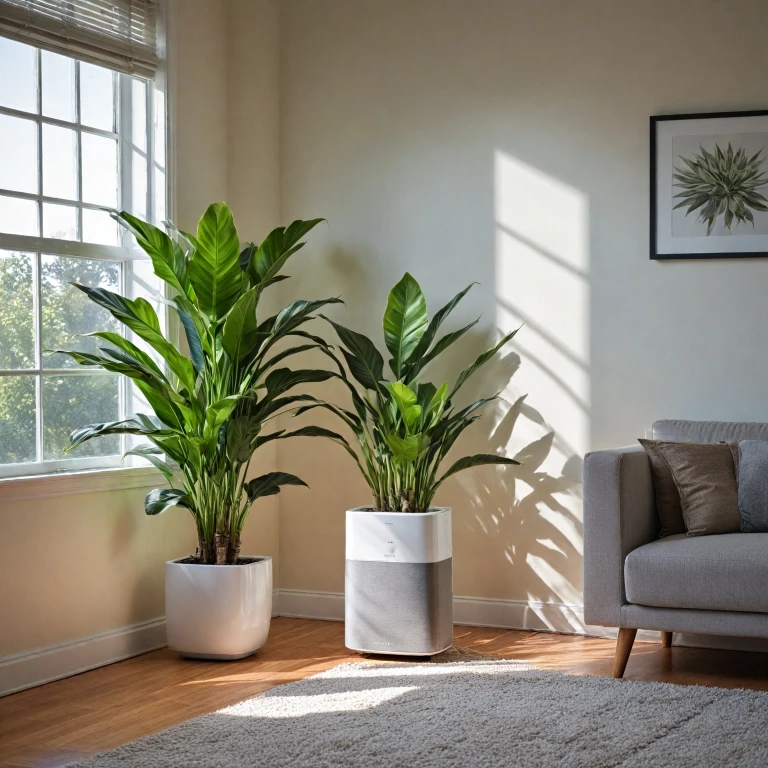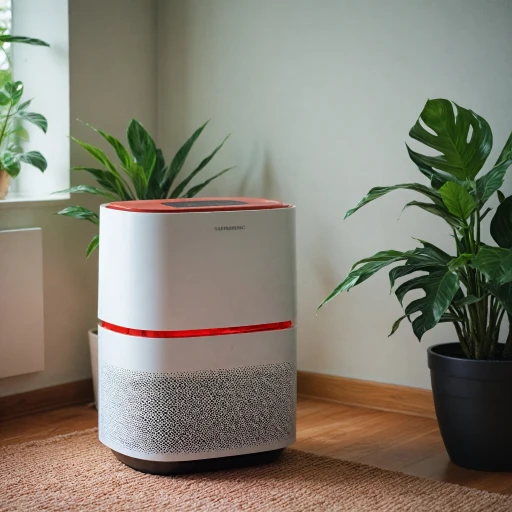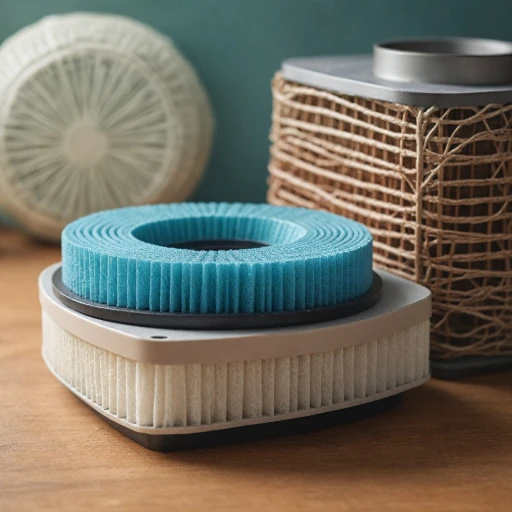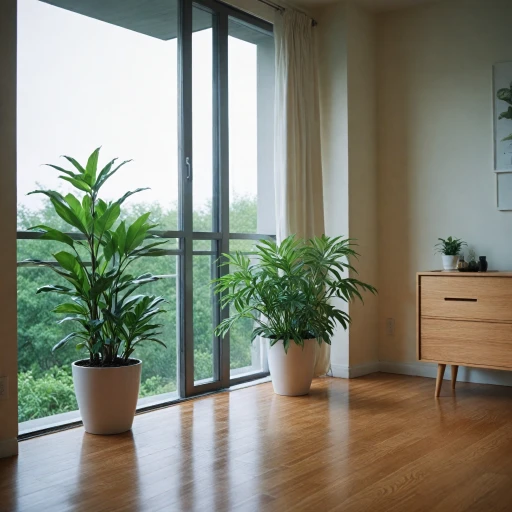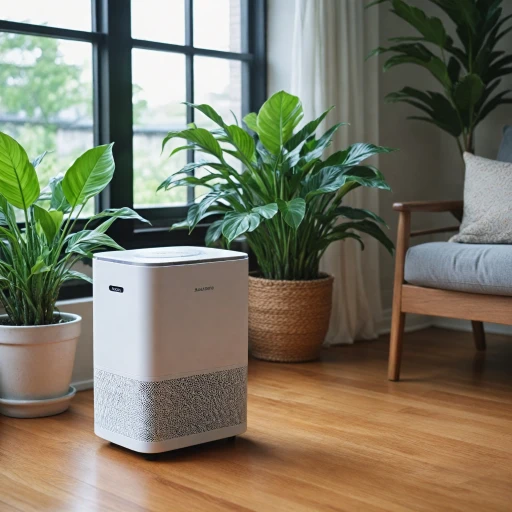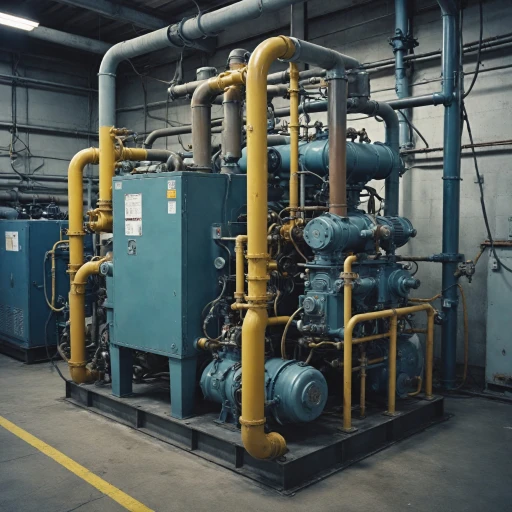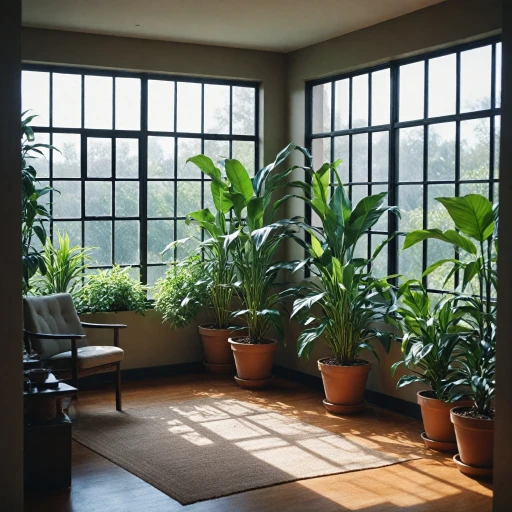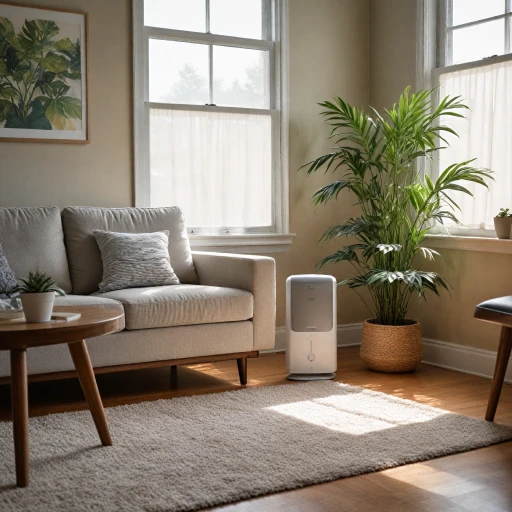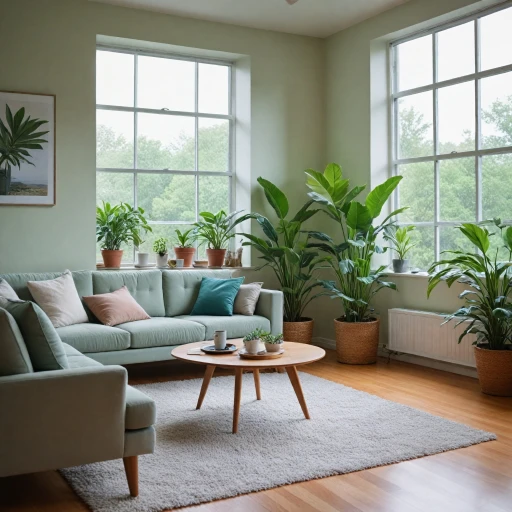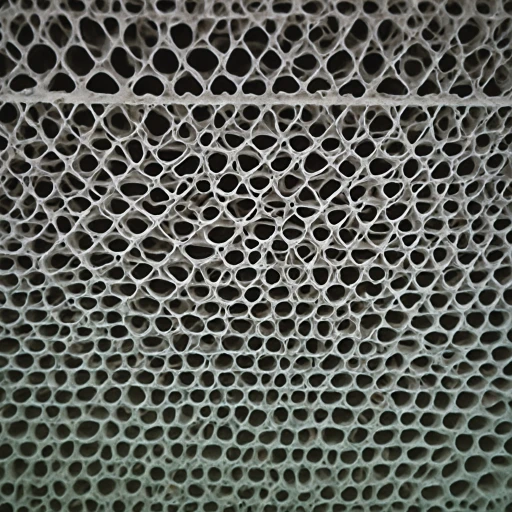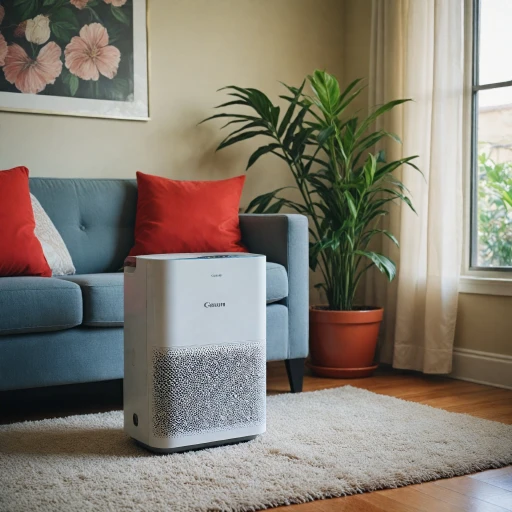
Understanding the Basics of Air Purifiers
Getting to Know Air Purifiers
Air purifiers have become an essential part of maintaining indoor air quality in homes and offices. These devices work by removing contaminants from the air, which can include dust, pollen, pet dander, and even smoke. With the rise in awareness about air pollution and its effects on health, the demand for air purifiers has significantly increased.
There are various types of air purifiers available, ranging from portable air purifiers to those integrated into HVAC systems. Each type serves a specific purpose and is designed to meet different needs. For instance, portable air purifiers are ideal for single rooms, while whole-house systems are integrated with your central air conditioning or heating systems.
How Air Purifiers Work
The core function of an air purifier is to filter the air. Most purifiers use a HEPA filter, which is known for its efficiency in trapping small particles. HEPA filters are often certified to meet specific standards, ensuring they can capture particles as small as 0.3 microns with high efficiency. This makes them particularly effective against allergens and pollutants.
Some air purifiers also incorporate additional technologies, such as activated carbon filters, which help in removing odors and volatile organic compounds (VOCs). Understanding the different types of filters and their functions can help you choose the right air purifier for your needs.
Why Certification Matters
When selecting an air purifier, it's crucial to look for products that are independently verified and certified. Certifications ensure that the product meets global standards for air purification and can effectively improve air quality. This is especially important if you are integrating the purifier with an existing HVAC system.
For more detailed information on the role of filters in air purifiers, you can explore this comprehensive guide.
The Role of Air Conditioning in Air Quality
The Intersection of Temperature and Cleanliness
The air conditioner (AC) serves a dual role in managing both temperature and humidity within your home. It is a crucial component in maintaining a comfortable living environment, but it also plays a significant part in enhancing indoor air quality. While primarily designed to regulate temperature, the AC system can indirectly affect air purification. By maintaining optimal humidity levels, it helps prevent the growth of mold and mildew, which are common allergens and can degrade air quality over time.Role of AC Filters in Purity
Most central air conditioning systems come equipped with filters that capture larger particles like dust and pet dander. However, these filters often fall short of capturing finer particulates. This is where air purifiers step in, especially those equipped with HEPA filters, which are the gold standard for filtering ultrafine particles. While an air conditioner's standard filter may help with general cleanliness, incorporating a purifier ensures a more comprehensive filtration, targeting pollutants that could easily bypass generic AC filters.Enhancing Longevity with Proper HVAC Integration
For a superior air quality system, integrating both an AC and an air purifier is key. When choosing products for your home, it is important to select ones that complement each other to maximize efficiency. Inevitably, the HVAC system itself requires attention regarding proper installation and maintenance. Regular check-ups ensure that both systems function at optimal levels, prolonging longevity and efficiency. You can find useful insights into maintaining different air quality devices by understanding their integral components and functionalities.Balancing the Supply Chain
Given the global supply chain challenges, being informed about certified and independently verified products can be beneficial. Prioritize reputable brands that comply with industry standards, ensuring that your indoor atmosphere stays fresh and healthy, regardless of external circumstances. Seek products that offer free shipping options or additional support services to save on costs. In essence, while air conditioners primarily manage environmental comfort, their collaboration with air purifiers ensures a holistic approach to creating an indoor environment that prioritizes both comfort and purity.Benefits of Combining AC with an Air Purifier
The Winning Duo: Air Conditioning and Air Purifiers
Combining an air conditioner with an air purifier can dramatically enhance the quality of indoor air. This dynamic duo works together to provide a comfortable climate while simultaneously reducing pollutants with precision. It's an unbeatable combination for those looking to upgrade their house air systems. Air conditioners primarily function to regulate temperature and control humidity, creating a comfortable indoor environment. However, they also play a pivotal role in enhancing indoor air quality. The cooling process often involves some level of air filtration, capturing larger particles and dust. But when paired with an air purifier, the effectiveness amplifies significantly.Seamless Integration
Air purifiers, particularly those equipped with advanced HEPA filters, are designed to capture minuscule particles, including dust, allergens, and pet dander. Integrating an air conditioning system with a purifier equipped with a HEPA filter means you’re getting an additional layer of air purification, ensuring even the smallest pollutants are trapped. HEPA filters are independently verified to meet strict global standards for air purification, offering a certified solution for health-conscious households. Many modern air purification systems can connect to your HVAC system, making them an extension of your existing cooling infrastructure. They can also work in tandem with portable air purifiers for more targeted interventions in specific areas of the home. By using a certified purifier with your central air system, you’re doubling down on efforts to maintain a pristine indoor environment.Energy and Cost Efficiency
A well-planned combination of AC and air purifier can also be a sound investment in terms of energy efficiency. While it may seem that running two devices will increase electricity consumption, many systems are designed to work in harmony, minimizing energy use. This can ultimately lead to savings on your energy bills, particularly if you choose products with energy-saving certifications. Consumers should ensure they select air purifiers compatible with their HVAC systems and confirm free shipping options when purchasing. Opt for systems that offer verified performance and high-quality air filters to ensure you achieve the best indoor air quality while managing costs effectively. Finally, considering the global supply chain challenges, planning ahead for filter replacements is advisable. Selecting a product that offers easy access to replacement filters can ensure your system remains functional all year round, maintaining a consistently high standard of air purification.Choosing the Right Air Purifier for Your AC System
Factors to Consider When Selecting an Air Purifier
When it comes to enhancing your indoor air quality, choosing the right air purifier to pair with your AC system is crucial. Here are some factors you should consider to ensure you get the best product for your needs:- HEPA Certification: Opt for purifiers that feature a HEPA filter. These filters are standard in capturing a large percentage of airborne particles such as pet dander and dust, making them an excellent choice for any house.
- Compatibility with HVAC Systems: If you have a central air system, consider whether a purifier can be integrated with it. Some models seamlessly work with HVAC systems and enhance overall indoor air quality.
- Portability vs. Fixed Units: Decide whether you need a portable air purifier or one that is permanently installed. Portable units can be moved from room to room, offering flexibility for different spaces within your home.
- Room Size and CADR Rating: Ensure the air purifier’s Clean Air Delivery Rate (CADR) is suitable for the size of the space you intend to use it in. This ensures efficient performance and optimal purification.
- Filter Replacement and Maintenance: Consider the ease of replacing filters and the overall maintenance required. Products with easily available filters and clear maintenance guidelines often provide cost savings in the long run.
- Independently Verified Performance: Look for air purifiers that have been independently verified for performance by global certification bodies. This certification serves as a guarantee of quality and effectiveness.
Integrating into Your Supply Chain for Air Quality Improvement
Choosing the right air purifier also involves understanding its place within your home’s broader air management system. An air purifier with air conditioning synergy can transform the indoor environment significantly. This integration can save energy and reduce the workload of your air conditioner by ensuring the air circulated is already cleaner. Ensure you evaluate your existing supply chain briefly to support high standards of air purification.Installation and Maintenance Tips
Setting Up Your Air Purification System
When integrating an air purifier into your HVAC system, ensuring a seamless installation and maintenance process is paramount for optimal air quality. Here’s a guide to help you:Installation Tips for Air Purifiers with AC Systems
- Select the Right Size and Model: It’s crucial to choose a portable air purifier or a central air purifier system that fits your specific HVAC configuration and indoor setting. Look for one with HEPA filters as they are certified to efficiently capture allergens like pet dander and other airborne particles.
- Professional Installation: Consider having your purifier installation done by a certified HVAC expert. This not only ensures compliance with safety and performance standards but also saves you any hassle with potential issues down the line.
- Position for Optimal Coverage: Position the air cleaner to maximize airflow throughout the house. Place portable air purifiers in rooms where you spend the most time to effectively combat indoor air pollutants.
Regular Maintenance Routines
- Filter Replacements: Regularly changing the filters is crucial to maintaining high air quality. HEPA filter replacements should be done in accordance with the manufacturer’s recommendations, often every six months.
- System Inspections: Periodically inspect your HVAC system for air purification efficiency. This can help in identifying any supply chain issues that could affect performance.
- Cleaning and Upkeep: Ensure that all parts of the air purifier system, including air supply ducts, are clean. This reduces the risk of blockages that can strain the system.
- Certification Check: Ensure that your air purifiers are independently verified for performance. Look for products with certification from recognized global standards for air purification efficiency.
Addressing Common Concerns and Misconceptions
Clarifying Myths About Air Purifiers and Air Conditioners
- Are Two Devices Always Required? One common misconception is that an air conditioner can replace an air purifier entirely. While an air conditioner improves indoor air comfort, air purifiers specifically target airborne particles by using filters like HEPA, which capture impurities such as pet dander and dust.
- Certification Essentials It's important to choose products with proper certification. Look for independently verified air purifiers, ensuring they meet global standards for air quality improvement.
- Portable Versus Central Systems Another frequent concern is whether to opt for a portable air purifier or integrate it with a central HVAC system. Portable units can be ideal for single rooms, whereas connecting a purifier with a central system benefits the entire house air supply.
- Concerns Over Cost-Effectiveness The idea that combining purifiers with air conditioners is cost prohibitive is not always true. The initial investment can lead to long-term savings by enhancing energy efficiency and extending the life of filters.
- The Assurance of Air Quality Finally, questions often arise about how effective these systems are in practice. Using air purifiers certified to handle specific pollutants ensures you achieve healthy indoor air standards, offering peace of mind with the quality of indoor air.
By addressing these common concerns, users can make more informed decisions about improving their home's air quality, fostering a healthier living environment.
